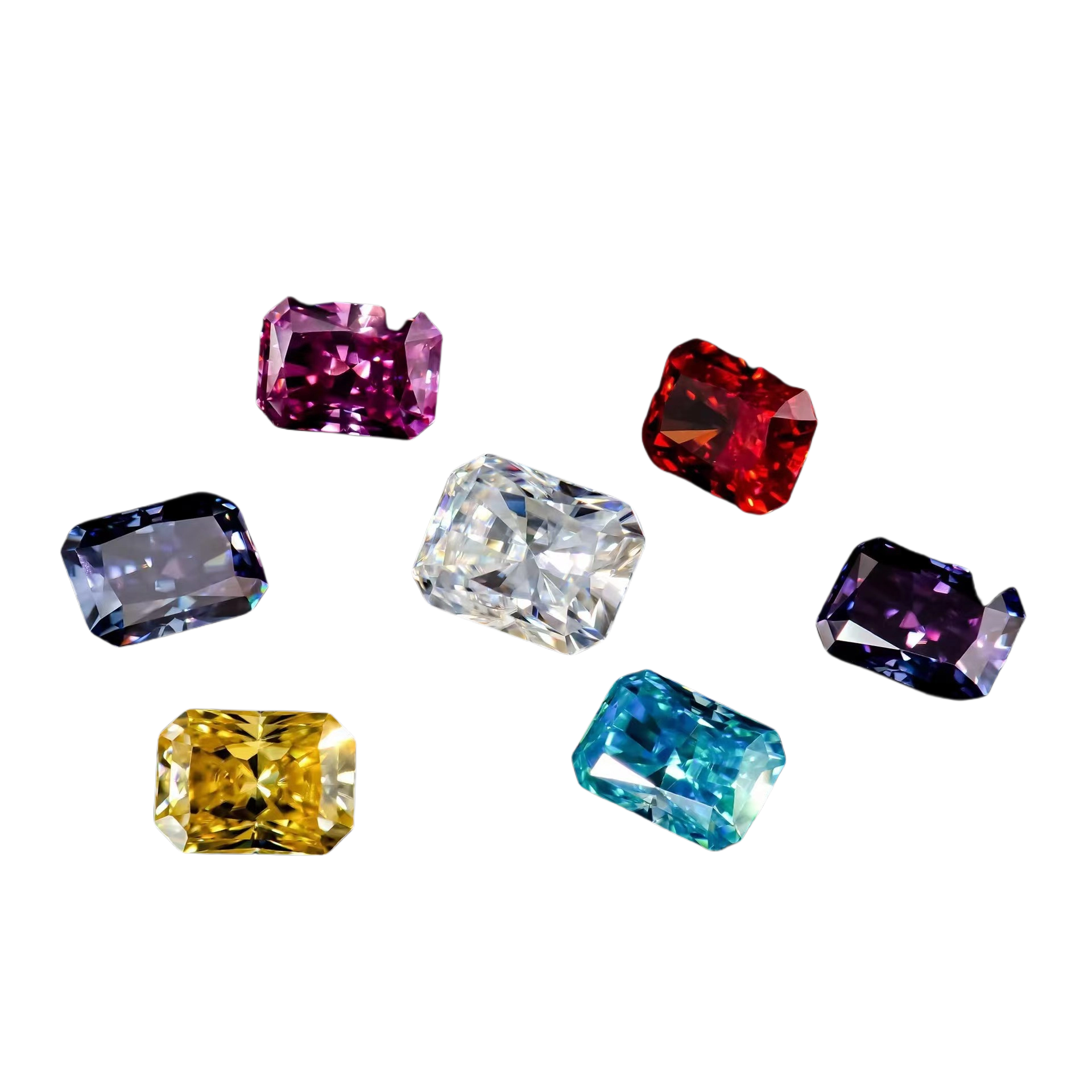What is the environmental value of moissanite stone?
Release time: 2025-01-15
With the improvement of environmental awareness, more and more people are beginning to pay attention to the impact of the jewelry industry on the environment. The damage to the ecological environment caused by traditional natural diamond mining and the accompanying social ethical issues have led many consumers to seek more sustainable and environmentally friendly options. In this context, moissanite, as a synthetic gemstone, has gradually emerged and become one of the representatives of environmentally friendly jewelry.
First of all, the impact of natural diamond mining on the environment is significant. Diamond mines are usually located in the deep layers of the earth or in remote areas. The mining process requires a lot of land mining, blasting operations, and deep digging of mines. These operations not only damage the ecological environment, but also may cause pollution to the surrounding water, soil, and air. In addition, diamond mining is often accompanied by poor labor conditions, social problems, and ethical disputes. Therefore, the mining of natural diamonds is widely regarded as an activity with high environmental costs and social burdens.
In contrast, moissanite stone is a synthetic gemstone that is usually manufactured in a laboratory through high temperature and high pressure technology, avoiding overexploitation of the environment and waste of natural resources. Moissanite is generally made from silicon, an element that is abundant and widely found on Earth, and its production process does not involve large-scale mining or damage to ecosystems. In addition, modern moissanite synthesis technology continues to develop, and its efficiency and environmental friendliness have been further improved. The production process uses relatively less energy and water, and waste can be effectively handled.
Secondly, moissanite is also sustainable. Because its production process is relatively short and controllable, the supply chain is more transparent, which allows consumers to have a clearer understanding of the source of the gemstones they buy. Many moissanite producers provide detailed certification to ensure that their products meet ethical standards without worrying about mining from controversial areas. This transparency makes moissanite a more ethical choice for modern consumers, especially in the context of an emphasis on ethical sourcing, more and more consumers tend to choose ethical and environmentally friendly jewelry.
Finally, the durability of moissanite also strengthens its environmental value. Moissanite has a hardness of 9.25, almost second only to diamond, which means it is very durable and not easily damaged or worn. Therefore, compared with other gemstones that are easily worn, moissanite has better durability in daily wear, reducing the need for frequent replacement of jewelry and indirectly reducing the waste of resources.
As a synthetic gemstone, moissanite has demonstrated its significant environmental value with its low environmental cost and sustainability in the production process. Compared with natural diamonds, the manufacturing method of moissanite not only reduces the damage to natural resources, but also avoids the ecological pollution and social problems caused by traditional diamond mining. Bahia will continue to bring you more and better quality moissanite jewelry.


